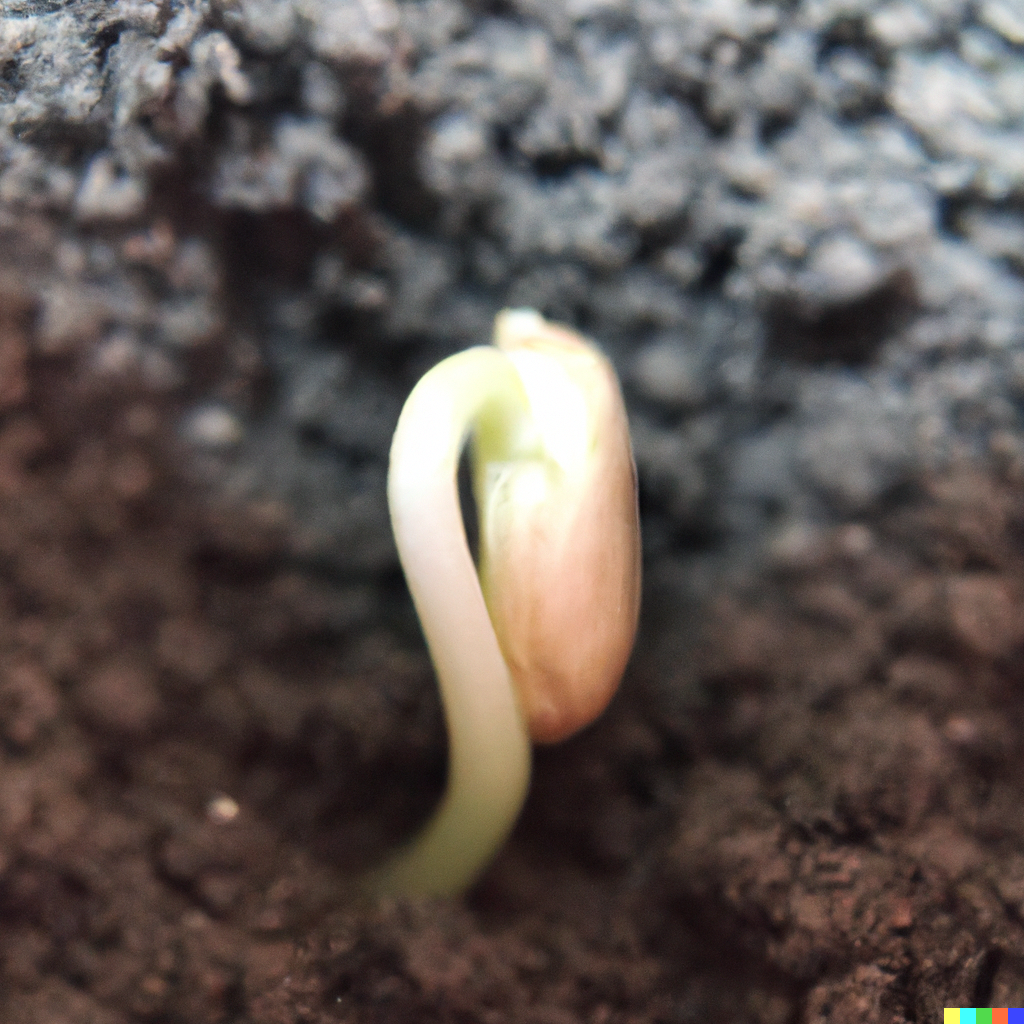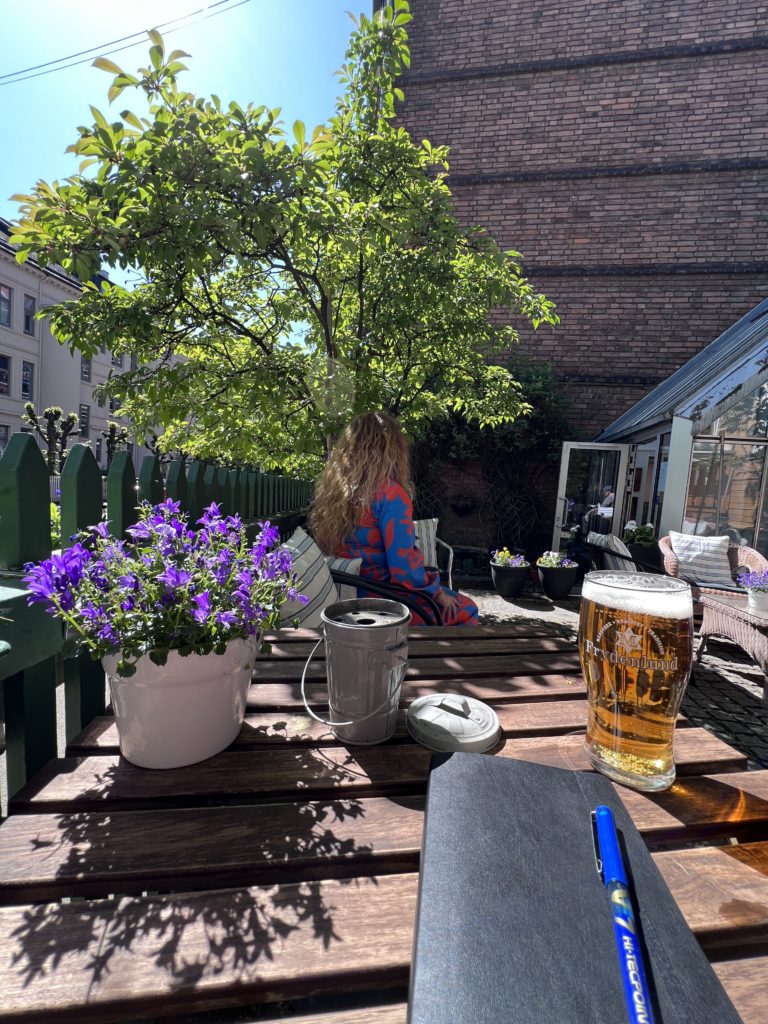Here is a video of my process of asking ChatGPT about my process/workflow for creating a music track in Garageband for iOS and video in Premiere Rush app for iOS and PC.
Video link: https://www.dropbox.com/s/4n8l86syik6d3b6/RPReplay_Final1685078737.MP4?dl=0
Here is the dialogue:
Prompt 1: «i want to learn to make music in Garageband, as well as videos in «Premiere Rush» app for iOS as well as PC. I need specific advice for how to streamline my process. I need a workflow that is as simple as possible, and as detailed as possible. My thinking is that, just like learning to ride the bicycle, I learn my process best by experimenting, in an iterative fashion, and gaining a «sense of mastery». You must act as a teacher with 20 years experience, so you have great pedagogical skills. You will now tell me what my Initial workflow should be. We will then continue from that starting point. Please note that my approach is to do things «quick and dirty», and to produce things (a finished movie with my own music) as fast as possible»
Response 1: «
Absolutely! I’d be happy to guide you through the initial workflow for creating music in GarageBand and videos in Premiere Rush. Let’s start with GarageBand and then move on to Premiere Rush. Here’s your step-by-step guide:
- Getting Started with GarageBand:
- Install GarageBand on your iOS device or PC if you haven’t already. It’s available for free on iOS and macOS devices and comes pre-installed on Mac computers.
- Open GarageBand and create a new project. Choose the “Empty Project” option to start from scratch.
- Familiarize yourself with the GarageBand interface. Explore the various instruments, loops, and effects available.
- Connect a MIDI keyboard or use the built-in virtual instruments to create melodies, chords, and drum patterns. Experiment with different sounds and instruments to find what inspires you.
- Creating a Music Track in GarageBand:
- Start by selecting a software instrument or an audio recording track. Software instruments allow you to play virtual instruments using your MIDI keyboard or computer keyboard.
- Use the musical typing feature in GarageBand to play melodies, chords, or drum patterns using your computer keyboard if you don’t have a MIDI keyboard.
- Experiment with different loops available in GarageBand’s library. Drag and drop them into your project timeline to build your arrangement quickly.
- Customize and fine-tune the loops by adjusting their duration, pitch, and effects. This will give your music a unique touch.
- Record your own audio using a microphone if you want to add vocals or other live elements to your track. GarageBand has built-in recording capabilities.
- Once you’re satisfied with your track, export it as a high-quality audio file by choosing “Share” from the menu and selecting the desired audio format.
- Getting Started with Premiere Rush:
- Install Premiere Rush on your iOS device and PC if you haven’t already. It’s available for free, and you can use the same Adobe ID to sync your projects across devices.
- Open Premiere Rush and create a new project. Choose the desired aspect ratio and resolution for your video.
- Familiarize yourself with the Premiere Rush interface. Explore the timeline, media browser, and various editing tools available.
- Import your music track from GarageBand by selecting “Import Media” and navigating to the location of your exported audio file.
- Import any video footage or images you want to use for your video. You can either shoot videos directly within Premiere Rush or import existing media files.
- Arrange your video clips and images on the timeline to create your desired sequence. Trim and split clips as needed to fit your vision.
- Drag and drop your music track onto the audio track in the timeline. Adjust the volume levels to ensure the audio balances well with your video.
- Add transitions, titles, and effects to enhance your video. Premiere Rush provides a range of options to make your video look professional.
- Once you’re satisfied with your video, export it by selecting “Share” and choosing the desired format and quality settings.
Remember, this is just the initial workflow to get you started. As you gain more experience and familiarity with GarageBand and Premiere Rush, you can explore advanced techniques and features to further refine your music and videos. Enjoy the creative process, and don’t hesitate to experiment and iterate to develop your sense of mastery.»
Prompt 2: «How much time should I expect to spend to create the first video with my own audio track?»
Response 2: «
The time it takes to create your first video with your own audio track can vary depending on several factors, including your familiarity with the software, the complexity of your project, the length of the video, and your overall proficiency in music and video editing. However, as you mentioned that you prefer a quick and dirty approach, let’s consider a basic estimate for a straightforward project:
- Music Creation (GarageBand):
- Familiarizing yourself with GarageBand: 1-2 hours
- Creating a simple music track: 1-3 hours (including experimenting with loops, recording audio, and arranging the composition)
- Video Editing (Premiere Rush):
- Familiarizing yourself with Premiere Rush: 1-2 hours
- Importing media and arranging the video: 1-2 hours
- Adding the music track and adjusting audio levels: 30 minutes – 1 hour
- Applying basic transitions, titles, and effects: 30 minutes – 1 hour
- Exporting the final video: 15-30 minutes
Based on this estimate, you can expect to spend around 5-10 hours in total to create your first video with your own audio track. Keep in mind that this is a rough estimate, and your actual time may vary depending on your learning speed, creative decisions, and the specific details of your project.
As you gain more experience and become more familiar with the software and your creative process, you’ll likely be able to streamline your workflow and reduce the time required for future projects. Practice and experimentation will help you become faster and more efficient in creating videos with your own music.»
Prompt 3: «Is it possible to cut down the time spent to 1 hour for the entire process? If so, what should I do to achieve this simplification of process?»
Response 3: «
While it may be challenging to complete the entire process, from music creation to video editing, in just 1 hour, it’s possible to simplify and streamline your workflow to make it more efficient. Here are some tips to help you reduce the overall time:
- Preparation and Organization:
- Before you start working, gather all the media assets you’ll need, such as audio files, video clips, and images. Having them readily available will save time searching for them later.
- Create a storyboard or rough outline of your video to have a clear vision of what you want to achieve. This will help you stay focused and minimize unnecessary experimentation.
- Music Creation:
- Opt for simpler music compositions initially. Use a combination of pre-made loops and basic instrument tracks to create your audio track quickly.
- Limit the number of instruments and effects you use to avoid getting overwhelmed with options. Stick to a few key elements that enhance your music.
- Instead of recording live audio, consider using pre-recorded audio files or vocal samples to save time.
- Video Editing:
- Choose a template or preset in Premiere Rush that aligns with your video’s style and theme. This will provide a ready-made framework to work with and save time on manual adjustments.
- Keep your video clips short and focus on concise storytelling. Avoid lengthy or unnecessary footage that requires extensive trimming or editing.
- Opt for simple transitions and effects that don’t require much customization. This will speed up the editing process.
- Use pre-designed title templates to quickly add text to your video rather than creating custom titles from scratch.
- Efficient Editing Techniques:
- Utilize keyboard shortcuts in both GarageBand and Premiere Rush to speed up your workflow. Learn the essential shortcuts for tasks like copying, pasting, trimming, and playback control.
- Familiarize yourself with the basic editing tools and techniques in both software to quickly make adjustments and fine-tune your work.
- Avoid excessive perfectionism. Remember, your goal is to create a quick and dirty video, so focus on achieving a satisfactory result rather than obsessing over minute details.
By following these tips and maintaining a focused, efficient approach, you can potentially reduce the overall time required for the process. However, it’s important to note that the complexity of your project and your familiarity with the software will still play a significant role. With practice and experience, you’ll gradually become faster and more proficient, enabling you to complete projects more quickly.»
Prompt 4: «Thank you!»
Response 4: «You’re welcome! I’m glad I could help. If you have any more questions or need further assistance, feel free to ask. Happy music-making and video editing!»
\\\\
Video of my process of creating this blog entry on my iOS phone: https://www.dropbox.com/s/j8rq06a378n74tz/RPReplay_Final1685079193.MP4?dl=0







